James R. Holton9780080470214, 9780123540157, 0123540151
Table of contents :
Contents……Page 6
Preface……Page 12
1.1 THE ATMOSPHERIC CONTINUUM……Page 14
1.2 PHYSICAL DIMENSIONS AND UNITS……Page 15
1.4 FUNDAMENTAL FORCES……Page 17
1.4.1 Pressure Gradient Force……Page 18
1.4.2 Gravitational Force……Page 20
1.4.3 Viscous Force……Page 21
1.5 NONINERTIAL REFERENCE FRAMES AND “APPARENT” FORCES……Page 23
1.5.1 Centripetal Acceleration and Centrifugal Force……Page 24
1.5.2 Gravity Force……Page 25
1.5.3 The Coriolis Force and the Curvature Effect……Page 27
1.6 STRUCTURE OF THE STATIC ATMOSPHERE……Page 32
1.6.1 The Hydrostatic Equation……Page 33
1.6.2 Pressure as a Vertical Coordinate……Page 34
1.6.3 A Generalized Vertical Coordinate……Page 36
PROBLEMS……Page 37
MATLAB EXERCISES……Page 39
Suggested References……Page 40
2. Basic Conservation Laws……Page 41
2.1 TOTAL DIFFERENTIATION……Page 42
2.1.1 Total Differentiation of a Vector in a Rotating System……Page 44
2.2 THE VECTORIAL FORM OF THE MOMENTUM EQUATION IN ROTATING COORDINATES……Page 46
2.3 COMPONENT EQUATIONS IN SPHERICAL COORDINATES……Page 47
2.4 SCALE ANALYSIS OF THE EQUATIONS OF MOTION……Page 51
2.4.2 Approximate Prognostic Equations; the Rossby Number……Page 53
2.4.3 The Hydrostatic Approximation……Page 54
2.5 THE CONTINUITY EQUATION……Page 55
2.5.1 An Eulerian Derivation……Page 56
2.5.2 A Lagrangian Derivation……Page 57
2.5.3 Scale Analysis of the Continuity Equation……Page 58
2.6 THE THERMODYNAMIC ENERGY EQUATION……Page 59
2.7 THERMODYNAMICS OF THE DRY ATMOSPHERE……Page 62
2.7.1 Potential Temperature……Page 63
2.7.3 Static Stability……Page 64
2.7.4 Scale Analysis of the Thermodynamic Energy Equation……Page 66
PROBLEMS……Page 67
MATLAB EXERCISES……Page 68
Suggested References……Page 69
3.1.1 The Horizontal Momentum Equation……Page 70
3.1.2 The Continuity Equation……Page 71
3.1.3 The Thermodynamic Energy Equation……Page 72
3.2.1 Natural Coordinates……Page 73
3.2.3 Inertial Flow……Page 75
3.2.4 Cyclostrophic Flow……Page 76
3.2.5 The GradientWind Approximation……Page 78
3.3 TRAJECTORIES AND STREAMLINES……Page 81
3.4 THE THERMAL WIND……Page 83
3.4.1 Barotropic and Baroclinic Atmospheres……Page 87
3.5 VERTICAL MOTION……Page 88
3.5.1 The Kinematic Method……Page 89
3.6 SURFACE PRESSURE TENDENCY……Page 90
PROBLEMS……Page 92
MATLAB EXERCISES……Page 96
4.1 THE CIRCULATION THEOREM……Page 99
4.2 VORTICITY……Page 104
4.2.1 Vorticity in Natural Coordinates……Page 106
4.3 POTENTIAL VORTICITY……Page 108
4.4 THE VORTICITY EQUATION……Page 113
4.4.1 Cartesian Coordinate Form……Page 114
4.4.3 Scale Analysis of the Vorticity Equation……Page 116
4.5 VORTICITY IN BAROTROPIC FLUIDS……Page 119
4.5.1 The Barotropic (Rossby) Potential Vorticity Equation……Page 120
4.6 THEBAROCLINIC (ERTEL) POTENTIALVORTICITYEQUATION……Page 121
4.6.1 Equations of Motion in Isentropic Coordinates……Page 122
4.6.3 Integral Constraints on Isentropic Vorticity……Page 123
PROBLEMS……Page 124
MATLAB EXERCISES……Page 126
Suggested References……Page 127
5. The Planetary Boundary Layer……Page 128
5.1 ATMOSPHERIC TURBULENCE……Page 129
5.1.1 The Boussinesq Approximation……Page 130
5.1.2 Reynolds Averaging……Page 131
5.2 TURBULENT KINETIC ENERGY……Page 133
5.3 PLANETARY BOUNDARY LAYER MOMENTUM EQUATIONS……Page 135
5.3.1 Well-Mixed Boundary Layer……Page 136
5.3.2 The Flux–Gradient Theory……Page 137
5.3.3 The Mixing Length Hypothesis……Page 139
5.3.4 The Ekman Layer……Page 140
5.3.5 The Surface Layer……Page 142
5.3.6 The Modified Ekman Layer……Page 143
5.4 SECONDARY CIRCULATIONS AND SPIN DOWN……Page 144
PROBLEMS……Page 149
MATLAB EXERCISES……Page 150
Suggested References……Page 151
6. Synoptic-Scale Motions I: Quasi- Geostrophic Analysis……Page 152
6.1 THE OBSERVED STRUCTURE OF EXTRATROPICAL CIRCULATIONS……Page 153
6.2 THE QUASI-GEOSTROPHIC APPROXIMATION……Page 159
6.2.1 Scale Analysis in Isobaric Coordinates……Page 160
6.2.2 The Quasi-Geostrophic Vorticity Equation……Page 164
6.3 QUASI-GEOSTROPHIC PREDICTION……Page 168
6.3.1 Geopotential Tendency……Page 170
6.3.2 The Quasi-Geostrophic Potential Vorticity Equation……Page 172
6.3.3 Potential Vorticity Inversion……Page 174
6.3.4 Vertical Coupling Through Potential Vorticity……Page 175
6.4.1 The Traditional Omega Equation……Page 177
6.4.2 The Q Vector……Page 181
6.4.3 The Ageostrophic Circulation……Page 185
6.5 IDEALIZED MODEL OF A BAROCLINIC DISTURBANCE……Page 187
PROBLEMS……Page 189
MATLAB EXERCISES……Page 191
Suggested References 6……Page 193
7. Atmospheric Oscillations: Linear Perturbation Theory……Page 195
7.2 PROPERTIES OFWAVES……Page 196
7.2.1 Fourier Series……Page 198
7.2.2 Dispersion and Group Velocity……Page 199
7.3 SIMPLEWAVE TYPES……Page 201
7.3.1 Acoustic or SoundWaves……Page 202
7.3.2 ShallowWater GravityWaves……Page 205
7.4.1 Pure Internal GravityWaves……Page 209
7.4.2 TopographicWaves……Page 214
7.5.1 Pure Inertial Oscillations……Page 217
7.5.2 Inertia–GravityWaves……Page 219
7.6 ADJUSTMENT TO GEOSTROPHIC BALANCE……Page 221
7.7 ROSSBYWAVES……Page 226
7.7.1 Free Barotropic RossbyWaves……Page 228
7.7.2 Forced Topographic RossbyWaves……Page 230
PROBLEMS……Page 233
MATLAB EXERCISES……Page 237
Suggested References……Page 239
8. Synoptic-Scale Motions II: Baroclinic Instability……Page 241
8.1 HYDRODYNAMIC INSTABILITY……Page 242
8.2 NORMAL MODE BAROCLINIC INSTABILITY: A TWO-LAYER MODEL……Page 243
8.2.1 Linear Perturbation Analysis……Page 245
8.2.2 Vertical Motion in BaroclinicWaves……Page 251
8.3.1 Available Potential Energy……Page 255
8.3.2 Energy Equations for the Two-Layer Model……Page 258
8.4 BAROCLINIC INSTABILITY OFA CONTINUOUSLY STRATIFIED ATMOSPHERE……Page 263
8.4.1 Log-Pressure Coordinates……Page 264
8.4.2 Baroclinic Instability: The Rayleigh Theorem……Page 266
8.4.3 The Eady Stability Problem……Page 270
8.5.1 Transient Growth of NeutralWaves……Page 273
8.5.2 Downstream Development……Page 276
PROBLEMS……Page 277
MATLAB EXERCISES……Page 279
Suggested References……Page 280
9. Mesoscale Circulations……Page 281
9.2 FRONTS AND FRONTOGENESIS……Page 282
9.2.1 The Kinematics of Frontogenesis……Page 283
9.2.2 Semigeostrophic Theory……Page 287
9.2.3 Cross-Frontal Circulation……Page 290
9.3 SYMMETRIC BAROCLINIC INSTABILITY……Page 292
9.4.1 Flow over Isolated Ridges……Page 297
9.4.2 LeeWaves……Page 298
9.4.3 DownslopeWindstorms……Page 299
9.5 CUMULUS CONVECTION……Page 302
9.5.1 Equivalent Potential Temperature……Page 303
9.5.2 The Pseudoadiabatic Lapse Rate……Page 304
9.5.3 Conditional Instability……Page 305
9.5.4 Convective Available Potential Energy (CAPE)……Page 308
9.5.5 Entrainment……Page 309
9.6 CONVECTIVE STORMS……Page 311
9.6.1 Development of Rotation in Supercell Thunderstorms……Page 312
9.6.2 The Right-Moving Storm……Page 315
9.7 HURRICANES……Page 317
9.7.1 Dynamics of Mature Hurricanes……Page 318
9.7.2 Hurricane Development……Page 320
PROBLEMS……Page 322
MATLAB EXERCISES……Page 323
Suggested References……Page 324
10. The General Circulation……Page 326
10.1 THE NATURE OF THE PROBLEM……Page 327
10.2 THE ZONALLY AVERAGED CIRCULATION……Page 329
10.2.1 The Conventional Eulerian Mean……Page 331
10.2.2 The Transformed Eulerian Mean (TEM)……Page 338
10.2.3 The Zonal-Mean Potential Vorticity Equation……Page 340
10.3 THE ANGULAR MOMENTUM BUDGET……Page 342
10.3.1 Sigma Coordinates……Page 344
10.3.2 The Zonal-Mean Angular Momentum……Page 346
10.4 THE LORENZ ENERGY CYCLE……Page 350
10.5 LONGITUDINALLY DEPENDENT TIME-AVERAGED FLOW……Page 356
10.5.1 Stationary RossbyWaves……Page 357
10.5.2 Jetstream and Storm Tracks……Page 360
10.6.1 Climate Regimes……Page 362
10.6.2 Annular Modes……Page 365
10.6.3 Sea Surface Temperature Anomalies……Page 366
10.7 LABORATORYSIMULATIONOFTHEGENERALCIRCULATION……Page 367
10.8.1 The Development of AGCMs……Page 373
10.8.2 Dynamical Formulation……Page 374
10.8.3 Physical Processes and Parameterizations……Page 375
10.8.4 The NCAR Climate System Model……Page 378
PROBLEMS……Page 379
MATLAB EXERCISES……Page 381
Suggested References……Page 382
11. Tropical Dynamics……Page 383
11.1.1 The Intertropical Convergence Zone……Page 384
11.1.2 EquatorialWave Disturbances……Page 387
11.1.3 AfricanWave Disturbances……Page 390
11.1.4 Tropical Monsoons……Page 393
11.1.5 TheWalker Circulation……Page 395
11.1.6 El Ni no and the Southern Oscillation……Page 396
11.1.7 Equatorial Intraseasonal Oscillation……Page 398
11.2 SCALE ANALYSIS OF LARGE-SCALE TROPICAL MOTIONS……Page 400
11.3 CONDENSATION HEATING……Page 404
11.4 EQUATORIALWAVE THEORY……Page 407
11.4.1 Equatorial Rossby and Rossby–Gravity Modes……Page 408
11.4.2 Equatorial KelvinWaves……Page 411
11.5 STEADY FORCED EQUATORIAL MOTIONS……Page 413
PROBLEMS……Page 416
MATLAB EXERCISES……Page 417
Suggested References……Page 419
12. Middle Atmosphere Dynamics……Page 420
12.1 STRUCTURE AND CIRCULATION OF THE MIDDLE ATMOSPHERE……Page 421
12.2 THE ZONAL-MEAN CIRCULATION OF THE MIDDLE ATMOSPHERE……Page 424
12.2.1 Lagrangian Motion of Air Parcels……Page 426
12.2.2 The Transformed Eulerian Mean……Page 428
12.2.3 Zonal-Mean Transport……Page 432
12.3.1 Linear RossbyWaves……Page 434
12.3.2 RossbyWavebreaking……Page 435
12.4 SUDDEN STRATOSPHERICWARMINGS……Page 437
12.5 WAVES IN THE EQUATORIAL STRATOSPHERE……Page 442
12.5.2 Vertically Propagating Rossby–GravityWaves……Page 444
12.5.3 Observed EquatorialWaves……Page 446
12.6 THE QUASI-BIENNIAL OSCILLATION……Page 448
12.7.1 Dynamical Tracers……Page 453
12.7.2 Chemical Tracers……Page 455
12.7.3 Transport in the Stratosphere……Page 456
PROBLEMS……Page 458
MATLAB EXERCISES……Page 459
Suggested References 12……Page 460
13. Numerical Modeling and Prediction……Page 461
13.1 HISTORICAL BACKGROUND……Page 462
13.2 FILTERING METEOROLOGICAL NOISE……Page 463
13.3.1 Finite Differences……Page 465
13.3.2 Centered Differences: Explicit Time Differencing……Page 467
13.3.3 Computational Stability……Page 468
13.3.4 Implicit Time Differencing……Page 471
13.3.5 The Semi-Lagrangian Integration Method……Page 472
13.3.6 Truncation Error……Page 473
13.4 THE BAROTROPIC VORTICITY EQUATION IN FINITE DIFFERENCES……Page 475
13.5 THE SPECTRAL METHOD……Page 477
13.5.1 The Barotropic Vorticity Equation in Spherical Coordinates……Page 478
13.5.2 Rossby–HaurwitzWaves……Page 480
13.5.3 The Spectral Transform Method……Page 481
13.6.1 The Ecmwf Grid Point Model……Page 483
13.6.2 Spectral Models……Page 485
13.6.3 Physical Parameterizations……Page 487
13.7.1 The Initialization Problem……Page 488
13.7.2 Nonlinear Normal Mode Initialization……Page 490
13.7.3 Four-Dimensional Data Assimilation……Page 492
13.8 PREDICTABILITY AND ENSEMBLE PREDICTION SYSTEMS……Page 494
PROBLEMS……Page 498
MATLAB EXERCISES……Page 500
Suggested References……Page 503
Appendix A: Useful Constants and Parameters……Page 504
Appendix B: List of Symbols……Page 506
C.1 VECTOR IDENTITIES……Page 511
C.3 VECTOR OPERATIONS IN VARIOUS COORDINATE SYSTEMS……Page 512
D.1 EQUIVALENT POTENTIAL TEMPERATURE……Page 514
D.2 PSEUDOADIABATIC LAPSE RATE……Page 516
Appendix E: Standard Atmosphere Data……Page 517
Appendix F: Symmetric Baroclinic Oscillations……Page 519
Bibliography……Page 526
Index……Page 532
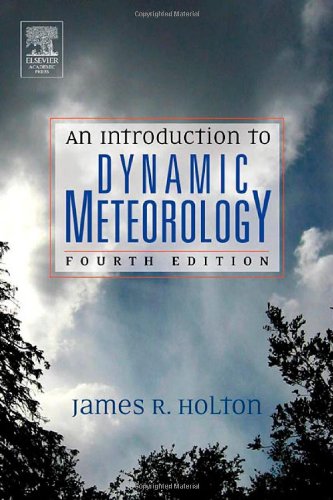
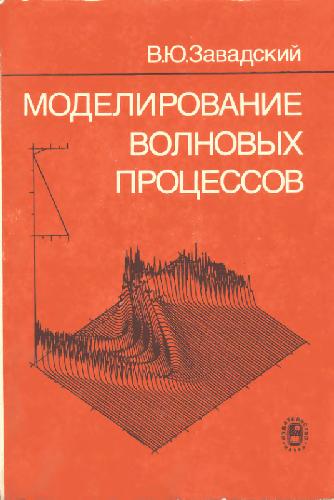
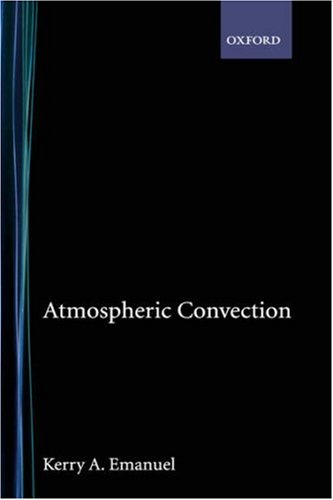
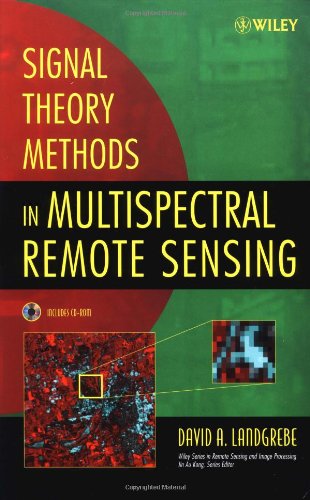
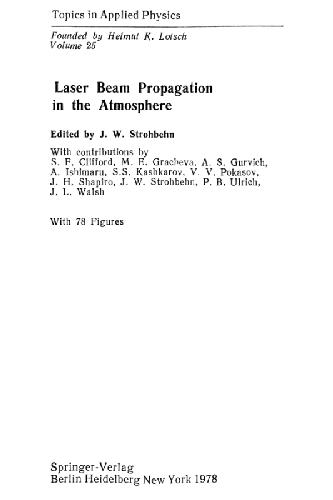


Reviews
There are no reviews yet.